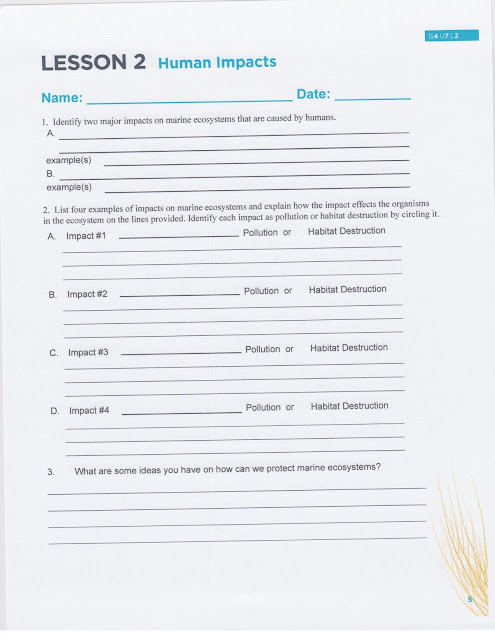ESSENTIAL QUESTION: How do interactions among organisms impact the changing environment?
BENCHMARKS: SC.912.L.17.5
LEARNING OBJECTIVES: Students will be able to:
-Identify the different roles of organisms in any ecosystem.
-Explain that different types of organisms exist within aquatic systems due to chemistry, geography, light, depth, salinity, and/or temperature.
-Investigate the chemical factors (pH, oxygen, carbon dioxide, nitrogen, phosphorous, and salinity) in aquatic systems.
-Explain how succession changes ecosystems over time.
-Recognize the potential changes to an ecosystem resulting from seasonal variations, climate changes,
and/or succession.
BELL RINGER- EOC Review SC.912.N.1.1 Scientific Thinking
A scientist performs an experiment to see if acids have an effect on the health of a particular type of plant. Three sets of plants were treated with acidic solutions of known pH while the control set was treated with a solution of neutral pH 7.
A scientist performs an experiment to see if acids have an effect on the health of a particular type of plant. Three sets of plants were treated with acidic solutions of known pH while the control set was treated with a solution of neutral pH 7.
Which is the best conclusion for this experiment?
A. Acid has no effect on the health of this type of plant.
B. High acidity is helpful to this type of plant.
C. Low acidity is harmful to this type of plant.
D. High acidity is harmful to this type of plant.
VOCABULARY: commensalism, ecosystem, global warming, greenhouse effect, invasive species, mutualism, parasitism, predation, primary succession, secondary succession, succession, symbiosis, abiotic, biome, biotic, biodiversity, climate, producer, consumer, decomposer, aquatic
AGENDA
WHOLE GROUP
Students completed the above bell ringer on their bell ringer sheet, which should be kept in the yellow folder.
We collected HL 4 and distributed HL 5.
Students received the vocabulary for this unit, which you must pick up from me or check your folder, since I forgot to scan the sheets!
I also forgot to show the study jams video on aquatic ecosystems, but you can watch it by visiting the following link:
Aquatic Ecosystems
Students then discussed and took notes on aquatic ecosystems. You can find the information in a movie version of the power point below.
Students spent the remainder of the class period in individual review and checking their seed germination experiment.
Students completed the above bell ringer on their bell ringer sheet, which should be kept in the yellow folder.
We collected HL 4 and distributed HL 5.
Students received the vocabulary for this unit, which you must pick up from me or check your folder, since I forgot to scan the sheets!
I also forgot to show the study jams video on aquatic ecosystems, but you can watch it by visiting the following link:
Aquatic Ecosystems
Students then discussed and took notes on aquatic ecosystems. You can find the information in a movie version of the power point below.
Students spent the remainder of the class period in individual review and checking their seed germination experiment.









